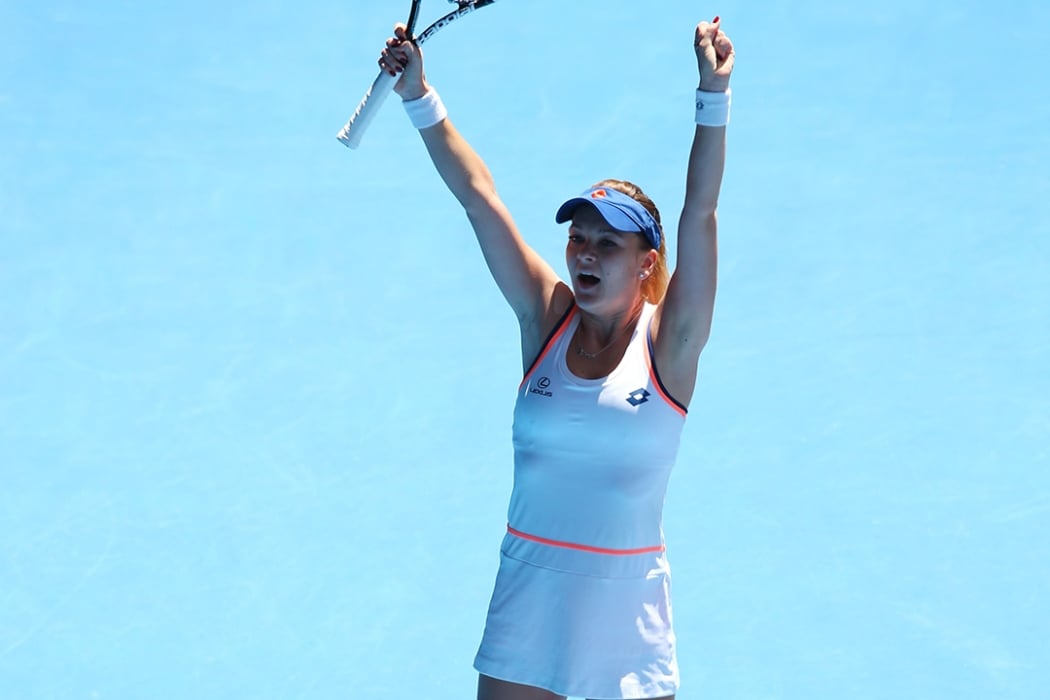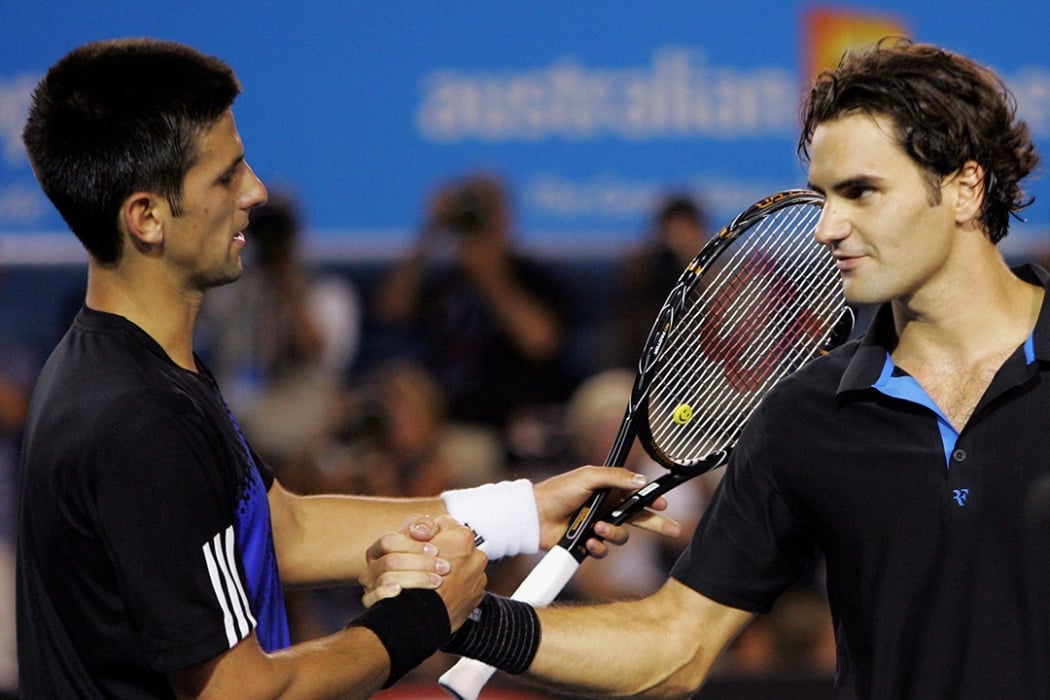In early 2015, Rafael Nadal was approaching a career crossroads.
As world No.1 he’d reached seven finals in the first half of 2014 and won his fifth consecutive Roland Garros title. But he managed just seven match victories for the rest of the year; a wrist injury wiped out his US hard-court swing, then appendix surgery prematurely ended his season.
Many believed the 28-year-old’s incomparable intensity and punishing brand of tennis would not equate to competitive longevity. Nadal was also low on confidence and match play entering Australian Open 2015, adding to the uneasy feeling of a legend in inevitable decline.
Nadal was nevertheless expected to comfortably handle his second-round assignment, against 112th-ranked qualifier Tim Smyczek. Yet he staggered to a 6-2 3-6 6-7(2) 6-3 7-5 triumph over the gallant and sporting – more on that later – American, his emotional celebration hinting at what he had endured to prevail.
This memorable encounter, under lights at Rod Laver Arena, is now available to watch in full on the AO YouTube channel, one of a growing number of full matches uploaded to the channel from the archives.
Nadal finds himself in a near-identical situation right now in 2024, rebounding from injury and searching for form while contemplating his future.
That this is so nine years after that initial uncertainty is a tribute to his enduring legend.
‘Swimming upstream’
By Australian Open 2015, Nadal had already battled ongoing injuries, including in the previous years’ final at Melbourne Park. He was five months out from his 29th birthday, and American reporter Nick McCarvel told ausopen.com he remembered chatter about Nadal possibly nearing the end of his storied career.
“There were some whispers,” said McCarvel, who covered AO 2015 for USA Today. “I remember they even lasted into the next year, when Nadal lost to Fernando Verdasco in the first round of the AO (in 2016).
“Some people really thought that was the beginning of the end. I was pretty hesitant to write anything like that because, well, it was Rafa.”
Nadal, whose 2015 season began with a first-round Doha loss to qualifier Michael Berrer, hardly exuded confidence when he arrived at Melbourne Park. “My game is always good when my movements are good, when I am able to have control of the point with my forehand ... But the forehand need to be aggressive, need to create space with (it)," the third seed said.
"That's the way that I need to play to have my chances back on being competitive against everybody.”
Against Smyczek, this was not how it played out.
The battle
In humid evening conditions, Nadal’s lack of recent match play hurt him. After he took the first set, extreme fatigue set in, and later nausea. Anxious and dizzy, he contemplated stopping.
Yet Nadal’s limited match fitness did not stop him winning his first-, third- and fourth-round matches in straight sets. Indeed, there was something about this particular clash that proved tougher than most.
“(Smyczek was) a qualifier, so he was grooved in; he had won four matches to reach the second round and did well to read the room when Rafa was ailing, moving the ball around the court and keeping Rafa winded,” McCarvel recalled.
“When Nadal isn't playing his best his timing can go off and he can lose his pop on the ball. It wasn't stinging the way it usually does.
“Smyczek was a guy who punched above his weight, someone who played countless (Challenger) matches in backwater locations to get his chance at the big stage. He got his shot against one of the greatest ever on Rod Laver Arena and fell just short.
“It was great theatre, the whole thing. And Rafa proved why he's so good – he found a way to win.”
From a break down in the third set, Smyczek played inspired tennis to snatch it in a tiebreak. Suddenly, he led two-sets-to-one, on the brink of a colossal upset.

The match reached its thrilling crescendo late in the fifth, when Smyczek held serve to lead 5-4. Here, Nadal showed his champion qualities, holding serve to love and then breaking the American with some excellent passing shots.
He’d won eight of the past nine points to wrest back control, and was now serving for the match.
But there was one final twist.
Sportsmanship
Nadal had surged ahead 30-0 when a fan shouted loudly from the stands in the middle of his first-serve motion on the next point. Nadal missed long, and the crowd booed. Smyczek turned that booing into applause by offering Nadal another first serve, effectively granting the point be replayed.
“That’s really excellent,” tennis legend Martina Navratilova said in the commentary booth. “You don’t see that kind of sportsmanship very much. Well done Tim.”
Nadal won the replayed point to arrive at 40-0 and three match points. Smyczek saved them all.
Nadal finally converted his fourth with a forehand winner and sank to his knees, shoulders shaking, after four hours and 12 minutes of toil.
FIVE IN FOCUS: Nadal, Collins, Ruud, Andreeva, Tsitsipas
“Is true that what (Smyczek) did at the end of the fifth is just amazing,” Nadal said in his press conference. “Very few players can do that after four hours something of match.
“So (I) just will say thanks to him because he's a great example what he did today.”
The aftermath
Nadal said this result demonstrated his ability to prevail despite tough circumstances.
“I worked very hard during all my career to resist, to try to be strong mentally,” he said. “Is obvious that all the practices when I was a kid, all the moments that I suffered, helps.”
He ultimately reached the quarterfinals, where he fell to Tomas Berdych – a player he had previously beaten 17 times in a row. McCarvel attended Nadal’s press conference following the Spaniard’s sobering 6-2 6-0 7-6(5) loss to the Czech.
“I remember I said, 'you had a so-so match,' and he stops me in the press room and goes, 'No, not so-so, very bad. You can say, no problem.' The whole place laughed,” McCarvel said.
“He was swimming upstream.”
Indeed, after Nadal’s 2014 Roland Garros triumph, he failed to reach the semifinals at any of the next eight Grand Slam tournaments he played.
It wasn’t until his restorative campaign at Australian Open 2017 that Nadal appeared to be returning to his best. In three seasons he reached seven major finals and won five, and was year-end world No.1 in 2019 – the same season Smyczek last appeared on court.

Shortly after his heroics against Nadal in 2015, he peaked at world No.68. But by late 2015 he was back outside the top 100, and remained so for the rest of his career.
His third-round run at the 2013 US Open remains his best Grand Slam result.
"I thought I had him for a minute. When he was kind of doubled over I could see he was really hurting. I started to believe that I really, you know, had a chance and could get it done," Smyczek said.
“But he turned it up to another gear. That's why he's been one of the best for years and years.”

